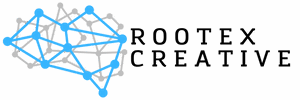In a world where your toaster might just be plotting against you, IoT governance has become the unsung hero of our tech-driven lives. As smart devices multiply faster than a rabbit on a sugar rush, the need for effective governance is more crucial than ever. Who knew that keeping track of your fridge’s Wi-Fi connection could be as complicated as deciphering an ancient scroll?
Table of Contents
ToggleOverview of IoT Governance
IoT governance encompasses the policies and practices that guide the management and security of Internet of Things devices. It addresses the complexities of device integration, data privacy, and regulatory compliance.
Definition and Scope
IoT governance refers to the frameworks and strategies for managing IoT devices across various sectors. Standards, such as data management protocols and security guidelines, fall within its scope. Organizations must establish governance mechanisms that balance innovation and risk management. This involves collaboration between stakeholders, including manufacturers, service providers, and end-users, to create unified policies. Effective governance ensures that IoT systems operate reliably, maintain compliance, and prioritize user safety and data security.
Importance in Today’s Digital World
The significance of IoT governance has escalated as smart devices become integral to daily life. Many industries, such as healthcare and transportation, rely on secure and efficient IoT systems. With increased connectivity, vulnerabilities also rise, making governance crucial for mitigating risks. Governance frameworks help organizations navigate regulatory challenges and protect sensitive data. They also foster public trust by ensuring transparency in device operations and data handling. Implementing robust governance enhances the overall performance and reliability of IoT ecosystems.
Key Principles of IoT Governance
Effective IoT governance revolves around several key principles that guide the management of devices, ensuring their security and compliance. Emphasizing these principles fosters a robust framework for handling the complexities of IoT technology.
Security and Privacy Considerations
Security stands as a critical concern in IoT governance. Devices often transmit sensitive data, raising risks related to cyber threats and unauthorized access. Implementing strong encryption protocols and continuous monitoring helps safeguard this data. Privacy matters, too; organizations need to establish clear data usage policies that empower users to understand how their information is collected and utilized. Regular assessments of vulnerabilities offer insights into potential risks, enabling timely mitigation strategies.
Compliance and Regulatory Frameworks
Compliance with regulations remains essential in the IoT landscape. Various standards, such as GDPR and CCPA, dictate how organizations collect and manage user data. Businesses must align their IoT practices with these regulations to avoid severe penalties. Development of internal policies should address specific industry requirements, ensuring that IoT devices meet legal standards. Regular audits and updates to compliance frameworks help maintain adherence as regulations evolve, fostering a culture of accountability and trust within the ecosystem.
Challenges in IoT Governance
Governance in the IoT landscape faces several challenges that impact effectiveness and efficiency. Addressing these challenges is crucial for ensuring a secure and well-managed IoT ecosystem.
Data Management Issues
Data management poses significant challenges in IoT governance. IoT devices generate vast amounts of data daily, complicating storage, processing, and analysis. Organizations must develop efficient systems to handle this influx while ensuring data accuracy and integrity. Furthermore, unregulated data flow can lead to compliance issues with privacy laws like GDPR. Effective data governance frameworks must outline data ownership, retention policies, and usage guidelines, ensuring that stakeholders manage data responsibly. Regular audits are essential for monitoring adherence and facilitating necessary adjustments.
Interoperability and Standardization
Interoperability and standardization represent major obstacles in IoT governance. Devices from different manufacturers often use diverse protocols, creating complications in integrating systems. Without common standards, organizations face increased maintenance costs and operational inefficiencies. Establishing industry-wide standards can facilitate smoother communication between devices, enhancing overall system reliability. Stakeholders, including industry leaders and regulatory bodies, must collaborate to create and adopt standardized protocols. By prioritizing interoperability, the IoT landscape can function more cohesively, benefiting both businesses and consumers.
Best Practices for Effective IoT Governance
Effective IoT governance requires adopting best practices that address security, compliance, and stakeholder collaboration. Organizations must prioritize a proactive approach in their governance strategies.
Establishing Clear Policies
Organizations should develop comprehensive policies that outline the governance framework for IoT devices. Clear guidelines regarding device management, data privacy, and security protocols must be established. Policies need to specify user responsibilities and data handling practices, ensuring compliance with regulations like GDPR and CCPA. Documentation of these policies benefits all stakeholders by promoting transparency and accountability. Engaging legal experts during the policy creation process fosters a stronger regulatory alignment and encourages ongoing updates as standards evolve.
Stakeholder Engagement Strategies
Successful IoT governance hinges on effective stakeholder engagement strategies. Companies must actively involve manufacturers, service providers, and end-users in the governance process. Regular meetings and collaborative workshops can facilitate knowledge sharing among stakeholders. Surveys and feedback mechanisms allow users to voice their concerns and suggestions. Prioritizing open communication channels strengthens trust and collaboration across the IoT ecosystem. Additionally, forming industry coalitions can guide best practices and foster unified standards, ultimately benefiting all parties involved.
Future Trends in IoT Governance
Emerging trends in IoT governance will shape the future landscape of technology. Continuous advancements drive the need for frameworks that adapt to evolving challenges.
Evolving Technologies and Their Impact
Innovations in artificial intelligence and machine learning significantly enhance IoT capabilities. They’re transforming data analytics, allowing real-time processing and actionable insights. Edge computing further optimizes device performance, bringing computing power closer to data sources. Enhanced connectivity options, like 5G, also promise lower latency and increased device reliability. Organizations must adapt governance frameworks to align with these technologies. Staying ahead ensures that security, privacy, and compliance remain priorities amid rapid change.
Anticipating Regulatory Changes
Regulatory landscapes for IoT governance are evolving swiftly. Governments worldwide are imposing stricter privacy laws and data protection measures. Businesses should expect increased scrutiny on compliance with standards like GDPR and CCPA. Preparing for these changes requires organizations to regularly review and update policies. Engaging in proactive dialogue with regulators can foster better outcomes. Adopting a forward-thinking approach eases the transition and ensures long-term sustainability in the IoT ecosystem.
Conclusion
The landscape of IoT governance is evolving rapidly as technology advances and smart devices become more prevalent. Organizations must prioritize effective governance frameworks that address security, privacy, and compliance challenges. By fostering collaboration among stakeholders and establishing clear policies, businesses can navigate the complexities of IoT management while enhancing trust and reliability.
As the regulatory environment continues to change, staying ahead of compliance requirements is essential for long-term success. Embracing innovation while maintaining strong governance practices will not only mitigate risks but also unlock the full potential of IoT ecosystems. A proactive approach to governance will ensure that organizations thrive in this interconnected world, ultimately benefiting both businesses and consumers alike.





